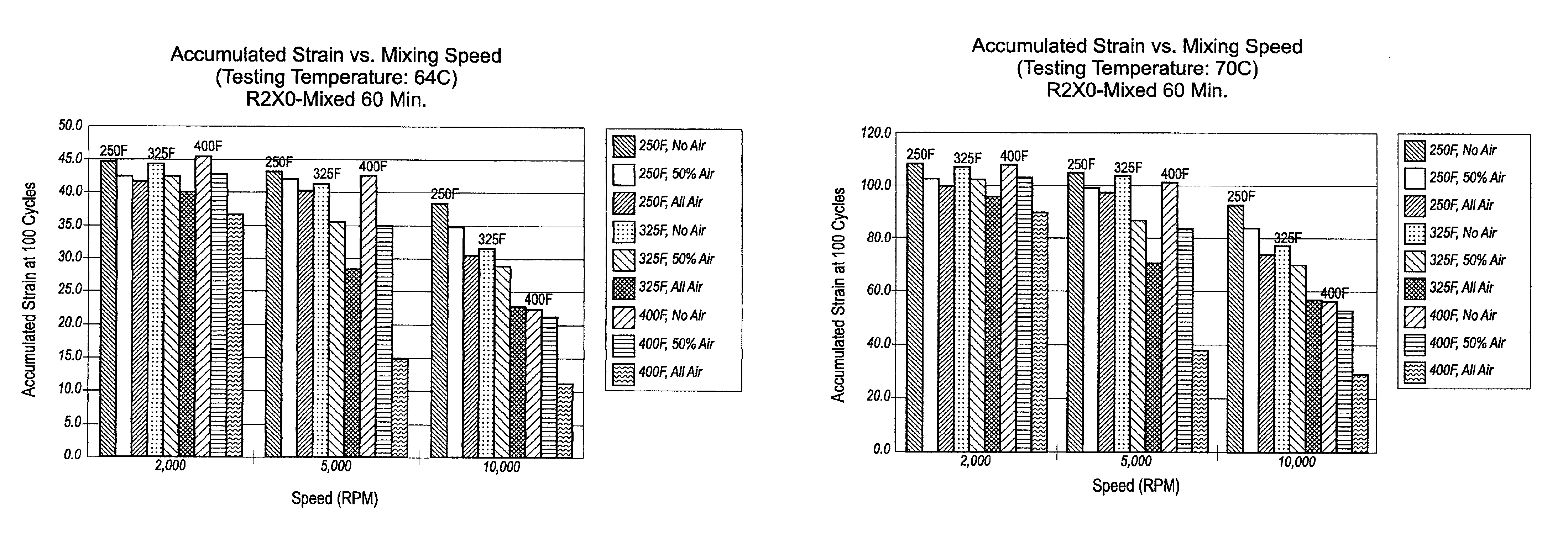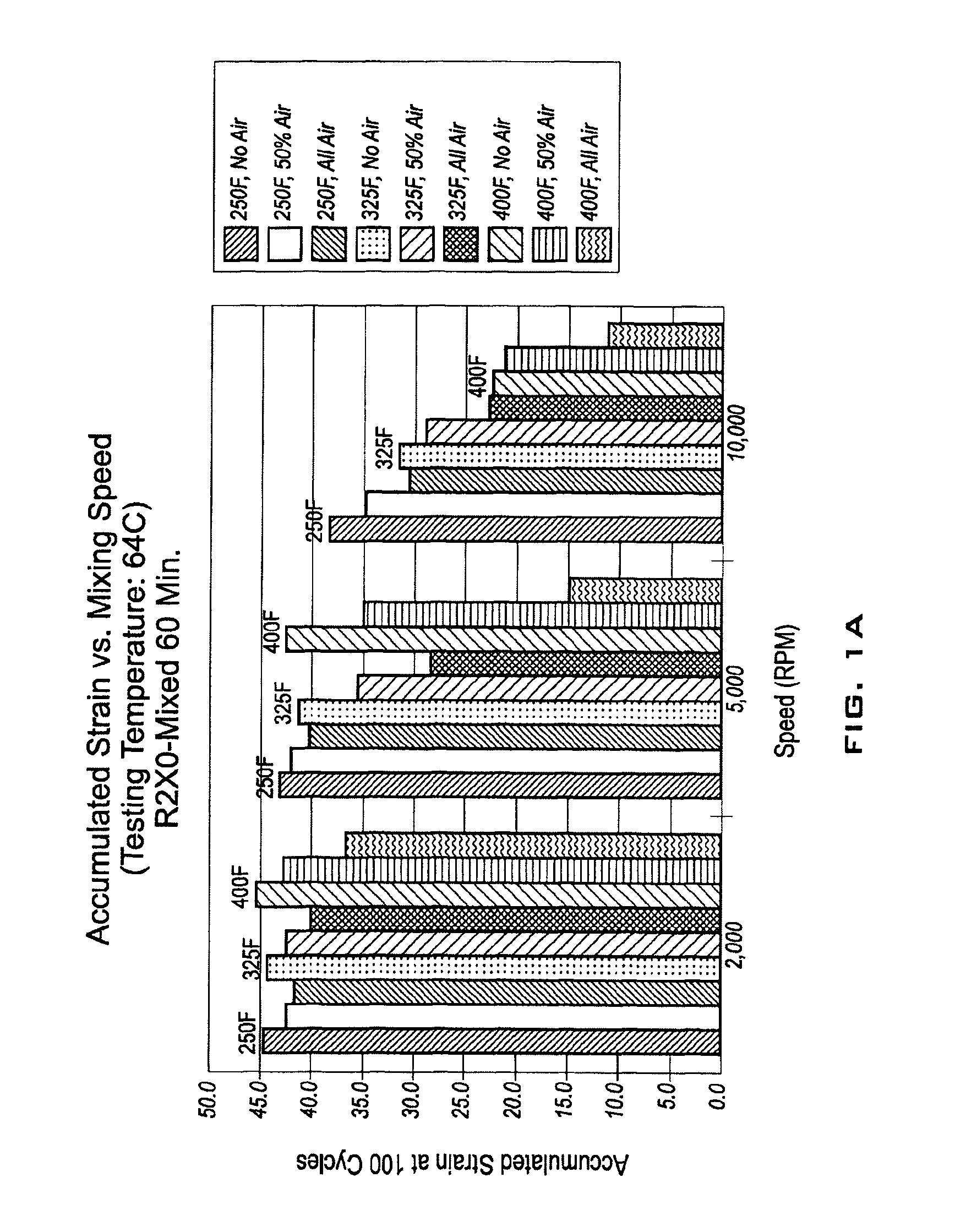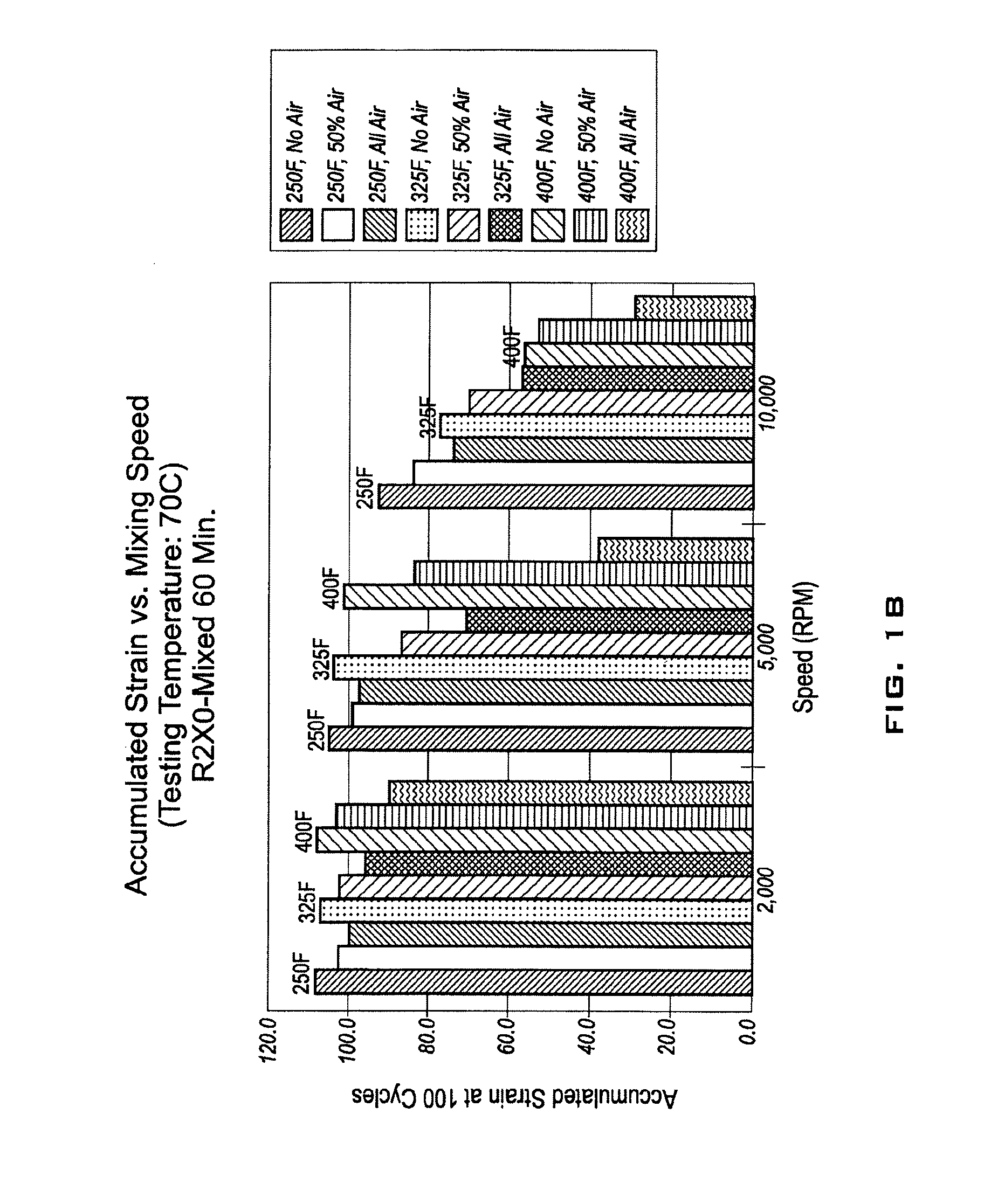Methods and systems for modifying asphalts
a technology of modified asphalt and asphalt slurry, which is applied in the direction of working up tar, working up tar, chemical refining, etc., can solve the problems of increased viscosity and softening point, decreased penetration, and general negative effect of blowing on fatigue resistance and low temperature properties, so as to improve fatigue resistance, improve rutting resistance, and improve the effect of shear
- Summary
- Abstract
- Description
- Claims
- Application Information
AI Technical Summary
Benefits of technology
Problems solved by technology
Method used
Image
Examples
examples 1-29
[0067]A base asphalt, San Joaquin AR-8000 (SJ AR-8000), was modified according to a 3×3×3 matrix of various combinations of 3 elevated mixing temperatures, 3 air-blowing rates, and 3 shear rates (mixing speed by high shear mixer) according to the asphalt modification procedure described below. Thus, a series of modified asphalts were made using three different elevated mixing temperatures (250° F., 325° F., and 400° F.), three different amounts of air-blowing (0, ˜50%, and 100% of the 2 L / min. pump capacity), three different mixing speeds (2,000 rpm, 5,000 rpm, and 10,000 rpm), and a treatment time of one hour, as summarized in Table 2 below. The modified asphalts may be referred to generically as “R2×0” herein.
Asphalt Modification Procedure
[0068]A sample of AR-8000 base asphalt (about 3500 grams) is poured into a cylindrical container (capacity about 6 liters) and heated up to the mixing temperature. The mixing head of a variable speed (500 to 10,000 rpm capacity) Ross Model 100LCI...
examples 30-31
[0079]The PG grading of a modified asphalt was evaluated in accordance with Superpave (Superior Performing Asphalt Pavements) asphalt binder specification (AASHTO MP1) as summarized in Tables 3-4 below. The results show that PG grading is improved two grades for the high temperature limit and one grade for the low temperature limit, thereby illustrating that PG grade is a paving property that may be substantially improved by the asphalt modification processes described herein.
[0080]
TABLE 3Base Asphalt (San Joaquin Refining AR-8000)PG Grade: 64-4Original (Un-aged) BinderRTFO Aged ResidueTestingDynamic Shear Rheometer (DSR), 10 rad / sTemperaturePhase Angle, δG* / sinδ (kPa)G* / sinδ (kPa)° C.(deg)(Min: 1.0 kPa)Phase Angle (deg)(Min: 2.2 kPa)6489.52.59188.74.8487089.91.08289.42.0037689.90.503PAV Aged Binder (Aging temperature: 100° C.)Bending Beam Rheometer FlexuralCreep, 60 secondsTestingDSR, 10 rad / sStiffnessTemperaturePhase Angle, δG* × sinδ (kPa)Testing(Mpa)m-value° C.(deg)(Max: 5 MPa)T...
examples 32-37
[0082]A modified asphalt is prepared by the general process described above for Examples 1-29, except that the base asphalt sample size is about 1,600 grams, mixing is conducted in a one-gallon container, the treatment time is about 60 minutes, the mixing speed is increased from about 8,000 to about 10,000 rpm over the course of the treatment time, and the mixing temperature is increased from about 300° F. to about 400° F. over the course of the treatment time. During mixing, air-blowing is conducted by forming a vortex during shear. A series of “back-blended” modified asphalts were made by mixing samples of this modified asphalt with samples of base asphalt (AR-8000 from San Joaquin Refining) in the ratios shown in Table 5 below. The mixing temperature for back blending is about 300° F. to about 325° F. and the mixing time for back blending is about 2 minutes to about 5 minutes.
[0083]The rutting resistance of the back-blended modified asphalts was evaluated by the Creep and Recover...
PUM
| Property | Measurement | Unit |
|---|---|---|
| temperature | aaaaa | aaaaa |
| temperature | aaaaa | aaaaa |
| temperatures | aaaaa | aaaaa |
Abstract
Description
Claims
Application Information
 Login to View More
Login to View More - R&D
- Intellectual Property
- Life Sciences
- Materials
- Tech Scout
- Unparalleled Data Quality
- Higher Quality Content
- 60% Fewer Hallucinations
Browse by: Latest US Patents, China's latest patents, Technical Efficacy Thesaurus, Application Domain, Technology Topic, Popular Technical Reports.
© 2025 PatSnap. All rights reserved.Legal|Privacy policy|Modern Slavery Act Transparency Statement|Sitemap|About US| Contact US: help@patsnap.com



